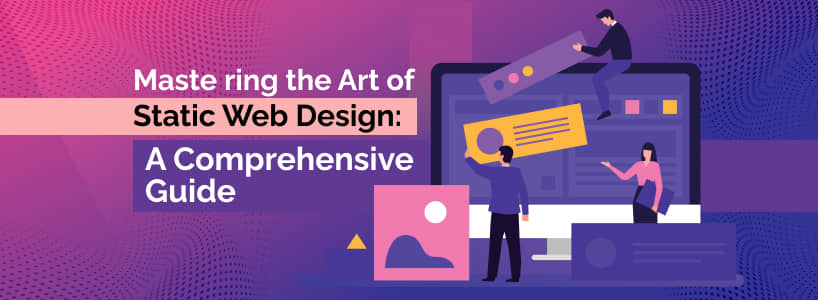In the ever-evolving landscape of web design, where trends come and go, one approach stands the test of time: Static Web Design. While dynamic websites powered by content management systems (CMS) like WordPress or Drupal have their merits, static websites offer a unique set of advantages that make them an appealing choice for various projects. In this comprehensive guide, we'll delve into the intricacies of static web design, exploring its principles, benefits, and best practices to help you master this art form.
Understanding Static Web Design
Static web design refers to the creation of web pages that remain unchanged unless manually updated by a developer. Unlike dynamic websites, which generate content on the fly based on user interactions or data inputs, static sites deliver pre-built HTML, CSS, and JavaScript files to visitors' browsers.
Advantages of Static Web Design
- Speed and Performance : Static websites are inherently faster since they don't rely on server-side processing or database queries. With fewer moving parts, they load quickly, providing users with a seamless browsing experience.
- Security : Since static sites don't interact with databases or server-side scripts, they're less susceptible to hacking or security vulnerabilities. This makes them a preferred choice for projects that prioritize data integrity and user privacy.
- Scalability : Static websites scale effortlessly since they can be served through content delivery networks (CDNs) without the need for complex server configurations. Whether you're expecting a sudden surge in traffic or catering to a global audience, Static Web Design offers unparalleled scalability.
- Simplicity : Building and maintaining a static website is often simpler and more straightforward than managing a dynamic counterpart. With fewer dependencies and less complexity, developers can focus on crafting polished user experiences without getting bogged down by technical overhead.
Best Practices for Static Web Design
- Optimize for Performance : Leverage techniques like minification, compression, and caching to optimize your static assets for faster loading times. Prioritize lightweight designs and efficient coding practices to ensure a snappy user experience.
- Embrace Responsive Design : Design your static websites to be responsive across various devices and screen sizes. Utilize media queries and flexible layout techniques to create designs that adapt seamlessly to desktops, tablets, and smartphones.
- Version Control : Incorporate version control systems like Git into your workflow to track changes, collaborate with team members, and roll back to previous iterations if needed. Version control ensures consistency and reliability in your development process.
- Content Management : Although static websites don't rely on traditional CMS platforms, you can still implement content management workflows using static site generators like Jekyll, Hugo, or Gatsby. These tools automate the generation of static files from content sources, allowing for efficient content updates and organization.
Conclusion
Static web design offers a refreshing alternative to dynamic counterparts, emphasizing speed, security, and simplicity. By mastering the art of static web design and adhering to best practices, developers can create elegant, high-performance websites that delight users and stand the test of time. Whether you're building a personal portfolio, a corporate landing page, or an e-commerce site, static web design provides a solid foundation for crafting exceptional digital experiences.
In conclusion, embrace the principles of static web design, leverage its advantages, and embark on a journey to master this timeless art form.


1 thoughts on "Mastering the Art of Static Web Design : A Comprehensive Guide"
sourabh
26 March, 2024 at 11:08 am
Thanks for sharing valuable information.
Cancel
Reply